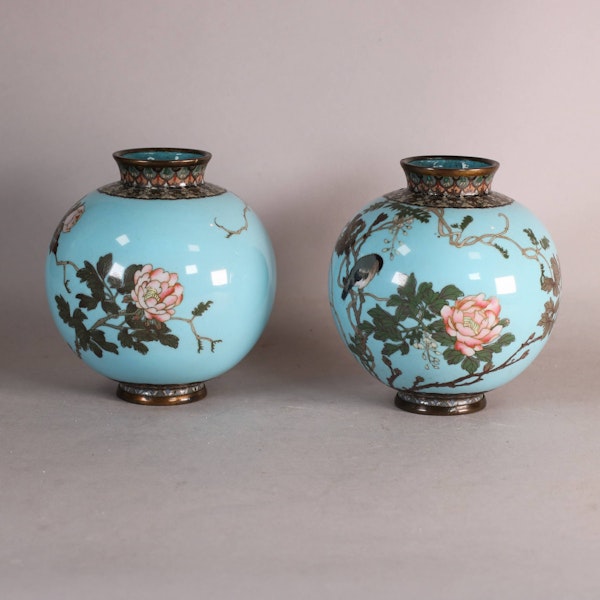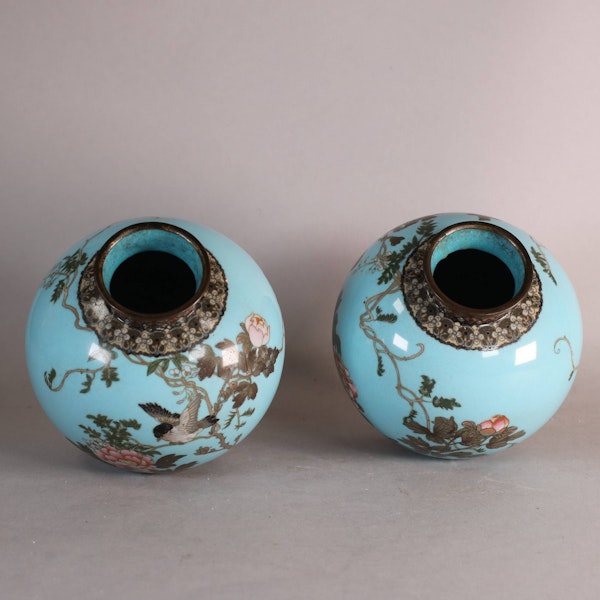Pair of silver and copper wire cloisonné vases, Meiji (1868-1912), circa 1900
Pair of silver and copper wire cloisonné vases, Meiji (1868-1912), circa 1900
POA
Description
Pair of silver and copper wire cloisonné vases, Meiji (1868-1912), circa 1900; the spherical bodies with a blue ground and decorated with tree peonies entwined with wisteria and perching Japanese marsh tit (ハシブトガラ, hashibutogara), the flared rims with a band of stylised flower heads and similar band to the feet.
Condition: Good
Notes: Cloisonné enamels (from the French ‘cloison’, meaning partition or decorative area) are known in Japan as shippo (七宝), a term also used to refer to the Seven Treasures of Buddhism. Though the list differs from text to text, these treasures are generally thought to include gold, silver, pearl, agate, crystal, coral and lapis lazuli. The jewel-like colours of early cloisonné enamels imported from Ming China fascinated Japanese craftsmen and by the 19th century Nagoya, Kyoto and Tokyo had become centres of innovation and production of exceedingly high quality Japanese cloisonné wares. These wares were very popular in Europe, and many superb examples were exhibited at the great ‘World Fairs’, including the Vienna Exhibition of 1873 at which the Nagoya Cloisonné Company won first prize. The period at the turn of the century, during which this pair was made, is commonly recognised as the peak of aesthetic and technical sophistication within cloisonné production.
For further information and reading recommendations please refer to the piece on cloisonne enamels in the articles section of our website.
| item details | |
|---|---|
| Material and Technique | Silver and copper wire inlaid with cloisonné enamels |
| Origin | Japanese |
| Condition | Excellent |
| Dimensions | Height: 14 cm. (5 1/2in.) |
Product REF: W659








